HomeReviewsEiyuden Chronicle: Hundred Heroes
Eiyuden Chronicle: Hundred Heroes review: a relaxed JRPG adventure with a few old school quirks, but even more palsAnd the love Kickstarts again
And the love Kickstarts again
Image credit:Rock Paper Shotgun/505 Games
Image credit:Rock Paper Shotgun/505 Games
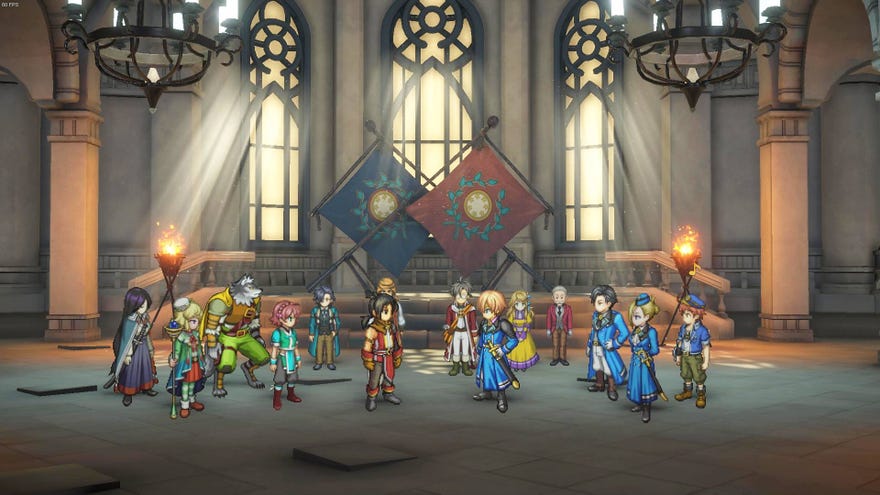
Eiyuden Chronicle: Hundred Heroesis the spiritual successor to a classicJRPGcalledSuikoden, and it came to be thanks to a very successful Kickstarter campaign. As someone with little knowledge of Suikoden, I went into Hundred Heroes thinking it was going to be a dense, old-fashioned, and slightly impenetrable time. And yes, some of it is annoying and obtuse and will almost certainly suit veterans who enjoy those quirks, but it has a surprisingly easy going nature. Hundred Heroes accomodates new players like me with combat that’s simple to grasp and a story that’s emotional and sprawling and absolutely worth your time.
If you’ve not played Suikoden, or Hundred Heroes' prequelEiyuden Chronicle: Rising, there’s no need to worry. The game’s story stands on its own as a sprawling continent-wide war that’s not only welcoming to newcomers, but told in a way that’s manageable for folks like me who struggle to keep up with who’s fighting who and for what.
Both Japanese and English voice acting is ace and gives each of its many, many heroes a distinctive voice (literally, too). Dialogue isn’t too anime, either. Yes it’s upbeat and jovial and can be overly earnest at times, but for the most part it’s surprisingly mature. |Image credit:Rock Paper Shotgun/505 Games
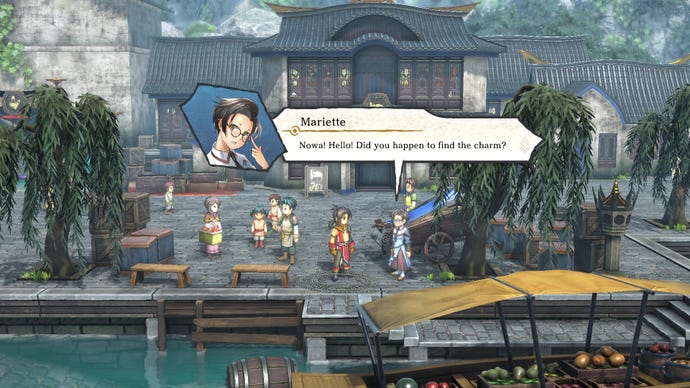
The main story is what steers you to new places with quest markers, so you’ve forever got somewhere to travel. For the most part, exploration sees you progress through regions of Allraan, where you’ll bounce between bustling towns filled with Chinese-inspired architecture, cutesy ice villages, and Shi’arc infested desert oases. Like say, the originalFinal Fantasy 7, these places exist as blocky bits on a condensed 3D map, which you’ll run between as titan-sized Nowa avatar to give off the impression you’re covering great distances.
One of the first things you’ll notice is the game’s presentation, which is downright lovely. It pairs 2D pixel art characters with more detailed 3D backgrounds, and great camera angles bring out the best of both. |Image credit:Rock Paper Shotgun/505 Games

A pattern does establish itself fairly quickly, in the sense that you’ll visit some towns, get involved in that region’s story, then inevitably find yourself travelling to a dungeon. Here you either navigate some corridors to get from A to B, or you navigate some corridors with bonus puzzling. Hooray!
It’s to be expected, right? Eiyuden is old school: you’ve got to save at specific points (there’s an autosave feature, although it’s infrequent enough to make me distrustful); you’re forever dragged into fights wherever you go. JRPG stalwarts won’t mind these things, and will no doubt enjoy scraps that crash onto your screen like YouTube ads. I’ve grown used to them, but I wish there was a speed up button to whizz through the simpler tasks during travel.
There’s a fairly in-depth party behaviour system, that lets you decide how certain heroes will act when they engage in an “Auto” battle. You can tell them to only heal, fight cautiously, and loads more. It’s incredibly versatile. |Image credit:Rock Paper Shotgun/505 Games
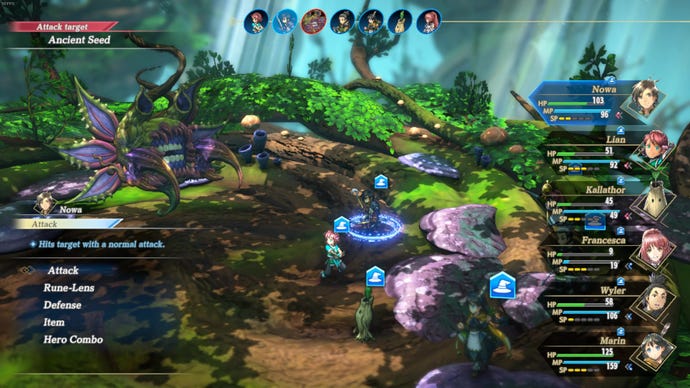
Once I set up my party, though, I opt for the “auto” button - which just lets everyone do their own thing - for 90% of the fights. Even including some bosses. Honestly, I respect the auto function’s power in making it easier for the story-oriented player who want to crack on with minimal fuss, but I’ve found its potency exposes the combat’s limitations.
Communication is what it comes down to, I think. Aside from when your heroes take their turns, you can’t tell who the enemy is going to target and with what. Your options are to spam the same few moves over and over, occasionally waiting for your SP bar to fill up so you can perform a fancy Rune Lense-powered move. Sometimes your characters leap to take hits aimed at someone else, seemingly of their own accord. Sometimes they’ll stun enemies, seemingly out of nowhere. Effects and the like aren’t communicated enough either, if at all (most are buried in an in-game menu), so even without the auto system fights take on an auto-battler feel: a double shot of attrition with a dash of randomness.
There’s also no system where you exploit enemy weaknesses to build up extra turns likeShin Megami Tensei 5, or in-depth buildcrafting to offset some turn-based fatigue likeFinal Fantasy 8’s Junction system. Instead, Hundred Heroes' equivalent is hero combos, where certain matey party members can perform super duper moves, like Nowa and the plucky Lian who can expend 2SP each to rinse enemies with a slash and a punch. They are wonderfully animated and seeing large numbers pop up is great, but man, it doesn’t add any other dimension to combat besides, “I guess I’ll wait a bit so I can use it again”.
Image credit:Rock Paper Shotgun/505 Games
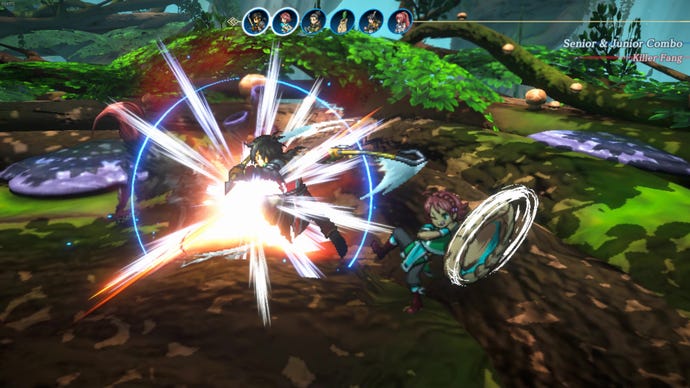
But while having lots and lots of heroes means great variety in who does 90% of your auto-battling, it’s a bit of a shame that variety can only be injected at inns or save points (at save pointsifyou’ve got a special seventh support character equipped), where swapping mid-combat - even from a small pool, as opposed to everyone - might’ve made adaptation more interesting. Often you commit to a setup, then regret your decision, or you commit to a setup and stick to it, because some heroes are clearly better than others. I will say that the game handles levelling your heroes well, as underleveled folks get tons more EXP until they’ve caught up, so new heroes aren’t immediately written off.
Image credit:Rock Paper Shotgun/505 Games
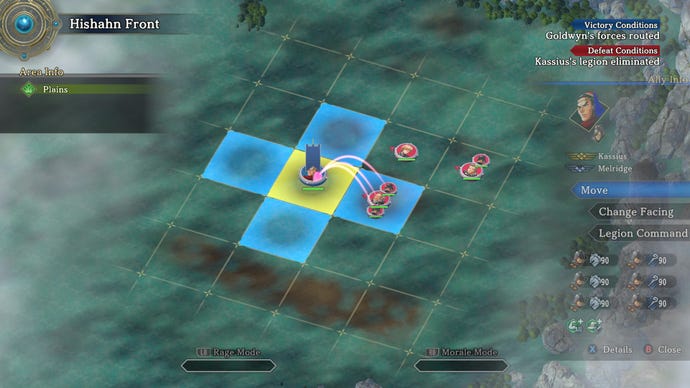
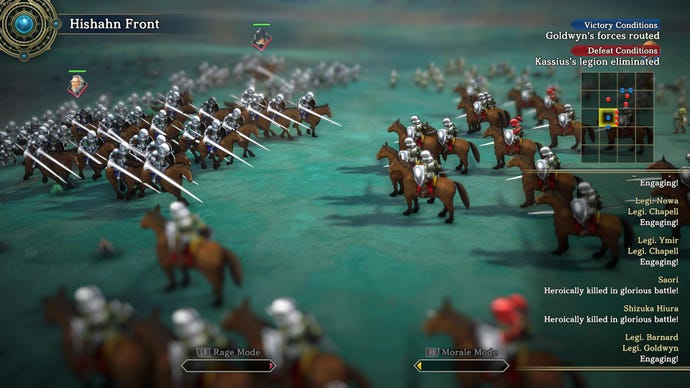
Image credit:Rock Paper Shotgun/505 Games
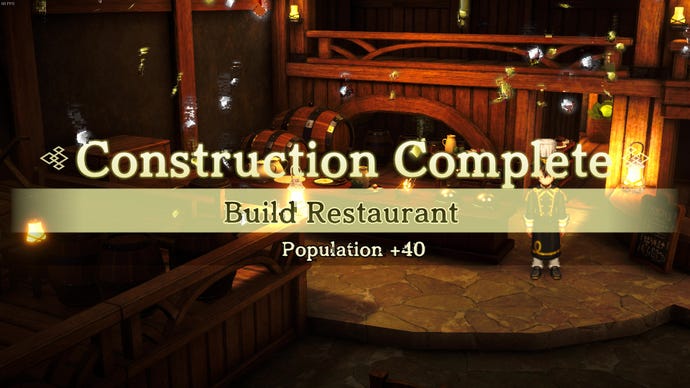
As someone who’s not the biggest strategy head, so I appreciate the game’s relaxed nature in letting me press a button, watch the action unfold, and, from time to time, take the reins. But, as with the turn-based combat, some folks who like pure, total control over the stats may rue its relative simplicity.
Off the battlefield, Heroes find a home in your Castle, which exists as a centerpoint for your army, and a settlement you invest in over the course of the game. It’s an enormous thing, a bit likeYakuza’s Dondoko Island, that could have its separate mini-review. But I will say that it’s a lovely place to see your pals get together, an easy way to harvest resources more reliably later on, home to fun minigames (cooking, racing, Beyblade) and its development acts as an embodiment of your progress.
Eiyuden Chronicle: Hundred Heroes has some old school habits, and they can be difficult to live with at first, but once you settle into those quirks, it’s a story you’ll struggle to put down. The sense of journey is magnificent, as you march across snowy valleys, lush jungles, and dusty deserts, sweeping up buds along the way. And you regularly partake in moments that’ll genuinely surprise, forever keeping your quest from getting stale. Expect one-on-one fights, cinematic song, and races of some description. If you’re a fan of Suikoden, it’s a no-brainer. And if you’re a fan of JRPGs or struggle a bit with old-fashioned things, I’d still urge you to give it a shot. It’s a really lovely hang.